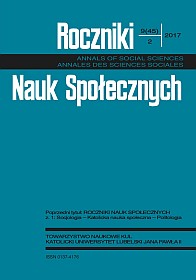On History and Development of Universities of the Third Age in China
Abstrakt
Historia i rozwój uniwersytetów trzeciego wieku w Chinach
Powstanie i rozwój uniwersytetów trzeciego wieku (U3A) w Chinach wynika z gruntownych względów historycznych i społecznych. Uniwersytety trzeciego wieku rozwinęły się na dużą skalę i cieszą się ogromnym sukcesem. Mają one odrębne cechy charakterystyczne w zakresie działalności związanej z ich prowadzeniem oraz bogate zasoby kulturowe, ale konotacyjny poziom akademicki należy w przyszłości podnieść. Aby osiągnąć zrównoważony rozwój uniwersytetów trzeciego wieku, konieczne jest dalsze wzmocnienie wsparcia rządowego, zwiększenie zasięgu edukacji, podniesienie poziomu badań teoretycznych i umiędzynarodowienia, stworzenie zewnętrznego środowiska, które będzie poważnie traktowane przez społeczeństwo, oraz zwiększenie modernizacji budowy uniwersytetów trzeciego wieku na wszystkich poziomach.
Bibliografia
Yu Fei, Strategic Choice of Silver China, „Wuhan Research on Elderly Education”, (2), 2008.
CAUA research group. Research on Modernization of Education in Universities of the Third Age in China, Guangdong Education Publishing House, 2010, 6.
CAUA research group. Design of Modernization Index System for U3A Education in China, Guangdong Education Publishing House, 2015, 3.
CAUA research group. Rural Elderly Education and New Rural Construction in China, Guangdong Education Publishing House, 2010, 10.
Pang Xuequan, Continuing Education Oriented to the 21st Century, Zhejiang University Press, Edition 1, September 2008.
Hu Ruiwen, Education Modernization from the Perspective of Core Indices, „China Education Daily”, 2009, 2, 4.
China Center for Modernization Research, Chinese Academy of Sciences. China Modernization Report 2006: Social Modernization, Peking University Press, 2006, 1.
He Chuanqi, Education: “The Winning Hand” of China’s Modernization, „China Education Daily”, 2009, 2, 4.
Zhou Jianhui, On Strategic Theme of Elderly Education, „Guangzhou Research on Elderly Education”, 2010, 2.
Proceedings of High-end Forum on Aging of Population and Contemporary Social Development. Guangdong, „Qiuguang Magazine”, 2009, 6.
Lu Jianjie and Zhang Lihua, New Forces on China’s Educational Front, Unity Pres, 2016, 4.
Lu Jianjie and Zhong Xuqiu, Bright Stars of Regional Elderly Education, Unity Press, 2016, 4.
Proceedings of China’s 11th Theoretical Symposium on Elderly Education, Wuhan Hubei, China, 2014, 11.
Guangzhou Elderly University, „Guangzhou Research on Elderly Education”, (16), 2015, 11.
Guangzhou Elderly University, „Guangzhou Research on Elderly Education”, (17), 2016, 6.
CAUA research group. National Research Report on Historical Development, Present Condition and Future Prospect of Elderly Education, 2014, 11.
CAUA research group. Research Report on Transformation Development of Elderly Education in China, 2014, 10.
CAUA. Proceedings of China Summit Forum on Elderly Education, Wuzhen Zhejiang, China, 2014, 5.
Wang Younong, On Green Development of Elderly Education in China, Beijing: International Forum for Elderly Education, 2015, 10.
Copyright (c) 2017 Roczniki Nauk Społecznych

Utwór dostępny jest na licencji Creative Commons Uznanie autorstwa – Użycie niekomercyjne – Bez utworów zależnych 4.0 Międzynarodowe.


